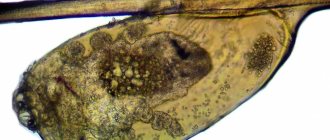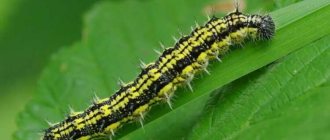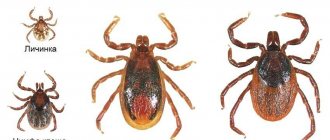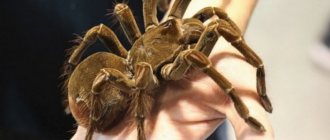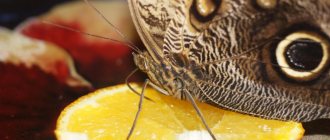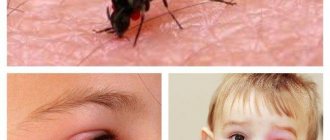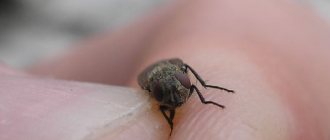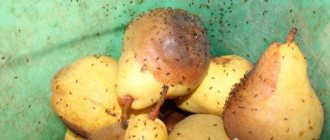Midges (Simuliidae) are a family of more than 2 thousand different species. Most representatives live in tropical and equatorial climates, however, there are also species that are found in temperate latitudes. Some species feed only on plant foods and pose no threat, others are carnivorous or blood-sucking pests. Like mosquitoes, in most predatory species of midges only females feed on blood and only during the breeding season, so in some cases the parasites may not bite all summer, but only for a certain period.
Due to the small size of midges, it is impossible to accurately identify their species by eye. For ease of classification, biting midges were classified as midges. This term is used to refer to any small blood-sucking insects. It also includes mosquitoes, horseflies
, burner flies and biting midges.
Reasons for the appearance of midges in the house
Until you find out why these small insects appeared in your home, you will not be able to completely remove them.
Important! Start fighting midges as soon as you notice them. When there are a lot of them, it will be much more difficult to get rid of them.
The appearance of midges is associated with the following factors:
- With irregular cleaning of the trash can, delay in taking it out. The temperature and especially humidity in a garbage heap with organic waste is slightly higher than in the environment. The remains of vegetables rot, midges begin to multiply. They notice insects when they are already flying everywhere. Often, midge eggs are laid on the walls and bottom of the bucket, and if it is not washed periodically, the insects will also begin to actively reproduce.
In most cases, insects breed in rotting environments.
- With unwashed fruits and vegetables from the garden or store. Many people believe (and not without reason) that the harvest from their own garden is the best, without nitrates, etc. They don’t wash the fruits right away, they begin to spoil. As a result, midges appear. The same thing happens due to lack of time or simply laziness with vegetables and fruits purchased at the nearest market or store.
Dirty or spoiled fruit.
- With rotting of the roots of indoor plants. This happens when the latter are watered abundantly. Any soil that is not sterilized contains midge eggs. As soon as a nutrient medium appears, small parasites immediately begin to multiply.
Flower plants. Midges appear in pots due to excess moisture.
- With improper fertilization of house plants. Tea is often used for the latter. The midges love him very much.
They parasitize house plants, inhibiting their growth.
- With placing indoor plants on the balcony. Insects can come from the street. Therefore, if you have already placed pots of flowers there, check them as often as possible.
The presence of unkempt indoor plants.
- With irregular cleaning of the tray and the habitat of pets, especially rabbits, hamsters and guinea pigs.
There is always organic matter there; if you don’t clean it out regularly, it rots.
- With improper care of the aquarium. Algae can also decompose. In addition, fish require moderately warm water.
These are ideal conditions for the appearance of rot, and therefore midges.
- With clogged water supply and sewer systems. First of all, with siphons for sinks and toilets. Residues of food settle at the bottom, and if not cleaned in a timely manner, they rot. The result is not difficult to predict.
Malfunction of the sewer system or other communications, leaking pipes.
Important! Don't be too scared of midges. They are, of course, unpleasant, but they do not bite humans, and they do not transmit pathogens of dangerous diseases. In general, unpleasant, but not dangerous.
Where do midges come from in the kitchen?
Like other insects that live in a person’s home, Drosophila flies make their way to you for the sole purpose of profiting from something tasty. And having assessed the comfortable conditions, the midges are in no hurry to leave the territory, beginning to multiply at an alarming rate. But what exactly caught their attention in your kitchen?
Let's do a test survey: for each “yes” answer, give yourself one point.
- Do you have a habit of peeling vegetables in the sink?
- Don't you throw trash out of the kitchen until the bin is full?
- Can a plate with strawberry tails sit on the table for a couple of hours after you've eaten it?
- Do you throw garbage directly into the bin without using garbage bags?
- After eating cherries or watermelons, do you throw the seeds and skins into the trash?
- Having bought fresh fruit, you don’t put it in the refrigerator: will you still eat it in a day or two?
- Are you a summer resident and you have bowls of raspberries and currants waiting to be sorted at home?
- Do you keep a strategic supply of onions, carrots, potatoes and beets under the sink?
Well, how many points did you score? Two, three or even four? I wouldn’t like to disappoint you, but even one point is enough for a whole cloud of midges to appear in your kitchen!
Drosophila love moisture: even their name is translated from Greek as “dew-loving.” So if, in addition to rotten fruit, your kitchen sink is leaking, it will be even more difficult to get rid of the problem.
You probably already understand what flies want: of course, tasty food. For the most part, they are interested in fruits and berries, but any rotting plant debris in the trash can or drain will do. Now it is clear why fruit flies appear mainly in the warm season, when we eat the most fruits and berries. Fruit flies are not interested in cereals, seasonings and animal food, so leave the cat's bowl alone. What you will have to deal with is garbage and places to store vegetables.
Types of midges
Midges seem the same, but in fact there are many types of them. The species most commonly encountered by humans are sciarids, fruit flies and butterflies.
Sciarides are soil insects that are found almost everywhere. Once they appear on indoor plants they can easily be destroyed. They mainly affect the root system and young seedlings. Body length 1.5 to 4 mm. The color of the integument is light gray in young animals and black in adults. The female lays up to 300 eggs in a clutch. The larvae are vermiform, 3 to 5 mm long, with a gnawing mouthpart.
Fungus gnat, midge, sciarid are the names of the same insect, some species of which pose a danger to home flowers.
Drosophila (winter gnats) are a type of fruit gnat. They prefer to live on rotting berries and fruits. Size no more than 4 mm. The color can be dark yellow, orange, brown and black. There are up to 80 eggs in a clutch. They begin to mate after development is complete. The larvae are white, about 3-4 mm long. Life expectancy is about a month.
They got their name because they are attracted to the smell of wine that comes from rotting fruit.
Sewer flies (butterflies) feel good not only in the bathroom, but also in the bathroom, especially if cleaning there is rare. The harm to a person is purely aesthetic. There are no confirmed reports of infections or bites. Size no more than 5 mm. Color ranges from light gray to brownish. The clutch consists of several dozen eggs. They are deposited wherever there is decomposing waste. They fly very poorly and over a short distance.
Butterflies are sewer midges that look like moths or small mosquitoes.
Midges are also distinguished by habitat. There are fruit, sewer, onion, indoor, basement, etc.
Important! Insect larvae are noticeable only at an early stage of formation. Then they actually merge with the fruit and are almost invisible. Therefore, even if at first glance there are no larvae, all purchased products should be thoroughly washed and, in addition, scalded with boiling water.
Bloodsucking
Insects of this species feed on blood and can infect people with serious diseases:
Bed bugs
A common blood-sucking insect of the bug species, order Coleoptera. Ectoparasite of humans and warm-blooded animals. An insect with a body size of 4-8 millimeters. It has a color ranging from light yellow to dark brown. Leads a nocturnal parasitic lifestyle. It feeds exclusively on blood. Average life expectancy is 1 year. Habitat: pillows, mattresses, cracks in the floor and under wallpaper. It does not cause harm to people, only in some cases there are allergic reactions to the bite.
Mosquitoes
The common mosquito (blood-sucking) belongs to the family of dipterous insects, a polytypic species. It has body sizes from 3 to 7 millimeters. Most species are yellow in color. And in this blood-sucking species it is mostly gray, less often brown. Leads a parasitic lifestyle. Females feed on plant sap and human blood (for eggs), and males feed exclusively on plant sap. The lifespan of the female ranges from 43 to 57 days depending on air temperature and nutrition, while the male lives only 19 days. Habitat: damp places and marshy areas.
Fleas
Small blood-sucking insects of the common flea family. They lead a parasitic lifestyle. Body length is from 1 to 5 millimeters. The color is dark brown. They feed exclusively on the blood of warm-blooded animals and humans. The lifespan of a flea is several months. Habitat – larvae live and lay in carpets, behind baseboards, in cellars and basements, in soft toys.
Very small insects are ectoparasites. The order is lice eaters. They lead a parasitic lifestyle. They have body dimensions of 4-6 millimeters. They feed exclusively on the blood of the host. Life expectancy is 38 days. They live on birds, mammals and humans. There are two types of lice in humans: pubic and head lice, which live exclusively on hair. They are carriers of typhus and relapsing fever.
Reproduction
Life cycle of the fruit fly Drosophila.
Like the entire Diptera family, they go through their life cycle in four phases:
- Egg.
- Larva.
- Doll.
- Imago (adult).
Moreover, all 4 phases are the same; the differences lie only in the timing of insect maturation, from eggs to adults.
To verify this, you need to consider each variety separately.
Drosophila
Its development cycle begins with the laying of eggs. To do this, the female chooses half-decomposed fruits or other products. Midge eggs, larvae and pupae are adapted to live in an aquatic environment. They have a special float chamber that helps keep them on the surface. One female is capable of laying about 400 eggs. Within 24 hours they transform into larvae. And by the end of the fifth day, it enters the pupal stage. After 5 days, a young Drosophila emerges from them, which in 8 hours will be a sexually mature individual.
Drosophila (appearance)
Whitefly
Its cycle consists of 6 stages.
Life cycle of a whitefly
- In the first stage, females lay eggs on the upper leaves of the plant. The duration of this phase ranges from 11 to 22 days.
- At the second stage, midge larvae emerge from the eggs, which are brown or black in color. At this time, they behave quite mobile, feeding on the juice of the leaves. The duration of this stage can be either 7 or 11 days.
- By the beginning of the third stage, the larvae become motionless. This continues for about 5-7 days, while their size increases.
- By the fourth stage they become even larger, but they are still motionless. This stage can be the longest, from 7 to 130 days. Its color and shape remain the same.
- At the fifth stage, they turn into a motionless pupa. It is 2 mm long and oval in shape, while the color of the pupa is the same, black or brown. The duration of this stage ranges from 7 to 34 days.
- At the last stage of development, the pupa turns into an adult, with a body length of 2 to 3 mm.
Sciarides
Sciarida
Reproduction of sciarids begins with the laying of eggs; the female does this in groups of 250 pieces. For them, she chooses moist soil or semi-decomposed wood. After 5-6 days, they become larvae, which actively feed within 2 weeks and turn into pupae. They stay in this stage for 4-5 days, after which they turn into adults.
Miracle Drosophila Fly
Midges - description, structure and characteristics
The body length of midges varies from 1.2 to 6 mm. The smallest species live in the tropics, the largest are common in the northern temperate and subpolar latitudes.
There are 3 main sections in the structure of midges: head, chest and abdomen. The rounded head of females has a wide forehead; in males it is narrower. The antennae of midges consist of 11 (sometimes 9 or 10) segments; they are very thin, rope-like and covered with short hairs. The color of the antennae varies from dark yellow and brownish to dark gray and black. The antennae of females are thicker and shorter than those of males, and also have a slight flattening and taper towards the end.
The eyes of the midge are faceted, in males they usually touch along the frontal seam, in females they are separated by the forehead. Horizontally, the eyes of males are divided into a larger upper part, where the large facets are located, and a smaller lower part, where the small facets are located. In females, all facets are the same size, and their number exceeds the number of facets in males. Additional simple eyes are not developed in midges.
Photo by: nadia. Taken from the site: diptera.info
The chest of insects is strongly convex. Hairs grow on the back, and there may also be various spots of dark or silver color. The color and shape of the spots vary among different species of midges.
The abdomen of midges is oval-shaped, slightly pointed towards the end and consists of 11 segments. The dorsal part of the first segment protrudes upward and backward, forming a kind of collar covered with a brush of long hairs.
Midges have well-developed halteres, which are club-shaped. The halteres are paired appendages of the thoracic segments of insects; in midges they are located on the metathorax and are modified wings. During flight, they help the insect maintain balance, vibrate and make a characteristic sound. That's why insects buzz. The stalk of the haltere in midges is of medium length, at the end of the club there is a slight impression. The color of the halteres varies from white-yellow, yellowish and ocher to brown and black. The club is usually lighter than the stalk. In addition, males have darker and brighter halteres than females.
Photo by: nadia. Taken from the site: diptera.info
The wings of midges are wide, round-oval, transparent, with longitudinal venation, length from 1.4 to 6 mm. The surface of the wings is covered with small tubercles. When at rest, the wings fold horizontally, covering one another.
Photo by: nadia. Taken from the site: diptera.info
The oral appendages of midges consist of palps and a complex proboscis of the piercing-sucking type. The proboscis is short and thick, it consists of an upper lip and epipharynx, hypopharynx, 2 mandibles (upper jaws), 2 maxillae (lower jaws) and a lower lip. The upper lip, mandibles and maxillae of blood-sucking females have teeth of the tearing-cutting type. In males and females that do not drink blood (for example, Prosimulium alpestre), the teeth are replaced by hairs. The maxillary palps consist of 4-5 segments; on the third segment a special sensory organ is developed that performs sensory functions. The palps are used by midges to orient themselves on the body of a person or animal when choosing a place for an injection. The upper lip also has the same functions, but first of all it serves to pierce the skin of the victim. After the bite, the wound is sawed off at the ends of the mandibles, which move from top to bottom. Maxillae, when immersed in the wound, tear the tissues and walls of the victim’s blood vessels. Next, the midge immerses the upper lip, epipharynx and hypopharynx into the wound and drinks blood. In the hypopharynx there is a channel through which saliva enters the wound, preventing blood clotting. The lower lip has a sensitive function and is used for licking. Like other bloodsuckers, midges pass water and liquid carbohydrate food through the esophagus into the crop, and blood flows directly into the midgut.
Midges have 3 pairs of fairly powerful limbs, each consisting of a coxa, trochanter, femur, tibia and a five-segmented tarsus. The paws of midges are equipped with claws: in males, at their base there is a wide cup-shaped tooth, in females the claws can be simple (short or long) or also have a tooth (large or small). Most often, the limbs of midges are black, although in some varieties individual segments of the legs may be yellowish or brown in color or covered with silvery spots. The coloring, pubescence and shape of the limbs depend on the type of midge.
Midge under a microscope. Photo credit: United States Department of Agriculture, Public Domain.
What do midges eat?
The eating preferences of insects also differ depending on the species. At the same time, midge larvae are characterized by particular gluttony, which is due to their accelerated rate of development.
Sciarides feed on organic decompositions in the soil, as well as root shoots of plants. The favorite foods of fruit flies are overripe or rotting fruits and some types of vegetables. Whitefly larvae prefer to feed on plant sap.
Adult midges do not eat, but live off the supply of nutritional components that they made at the larval stage.
Pests and vectors of infections
These types of insects can cause harm to property and human health:
Cockroaches
Very nimble insects of the cockroach order. They lead a nocturnal, secretive lifestyle. Body sizes range from 1.7 to 9.5 centimeters. They feed on plant and animal remains, various garbage and even feces. The color is mainly yellow-brown and black. Life expectancy is about 30 weeks, and in some species even several months. Habitat: basements, garbage cans, human dwellings. They harm indoor plants, book bindings, spoil food and furniture.
House ants
Tiny insects of the Hymenoptera family. They lead an active lifestyle next to a person. Body dimensions 2-4 millimeters. House ants are omnivores, but prefer meat, fish, and sweets. The color is mainly yellow and brown. They live in large families, the number of individuals reaching up to 1 million in one family. Life expectancy is as follows: males live only 20 days; working ants and ordinary females - up to 2 months; female queen – 275 days. They live mainly in human housing, trade and catering establishments. They harm plants, spoil food, and are carriers of all kinds of microbes.
Double-tailed
Insect type - arthropods, order - cryptomaxillary hexapods. They lead a secretive nocturnal lifestyle. They have a body 2-3 centimeters long. They feed on microscopic insects and living microorganisms. The color is red-brown. They live for about 1 year in damp rooms (bathroom, kitchen, etc.) They cause hostility in humans by their mere appearance, bite painfully, and damage plants, books, and furniture.
woodlouse
Arthropod insect order - isopods, suborder - crustaceans. They lead a hidden lifestyle (hiding under stones, lying trees) in damp places. The body length reaches 20 millimeters. Life expectancy is from 9 to 12 months. They feed on living and decaying plants. The color is gray, the abdomen is white. They do not cause harm to humans and do not pose a danger.
Carpet beetle
Beetle, order - Coleoptera, family of leather beetles. Lives mainly in houses, apartments, in nature in bird nests and tree hollows. Body dimensions range from 2.5 to 5.5 millimeters. It feeds on organic residues in house dust. The color is uniform from light brown to black. It is a serious pest of leather, fur, wool, feathers, silk, carpets and rugs, upholstered furniture and toys, as well as all types of grain and food.
Book louse
A small parasite, an insect of the order Hayeater. Lives everywhere: in the forest on trees, in bird nests, in rodent burrows, in human homes - mainly on shelves behind books. It has very small body sizes of 1-2 millimeters. Life expectancy is 3-4 weeks. The color is light brown, yellowish, whitish depending on the habitat. In nature it feeds on mushrooms and lichens, in the house on book bindings (remnants of paste or starch) and old albums, in barns on grain and other products. They cause irreparable damage to libraries and granaries.
Circumstances of occurrence of insects
It’s just that midges will never appear in the house. They are usually attracted to dirty fruits and vegetables. There are usually larvae on the fruits, and when the food begins to rot, they become active. Insects have a short life, but if suitable conditions are created, their number quickly increases.
Midges manage to lay a huge number of eggs per day
Causes of unwanted midges:
- If the garbage in the house is not taken out for a long time, this may be the reason why midges appear in the apartment. They feed on food scraps in the garbage container. Small midges in an apartment are often located on the trash can itself, so it is necessary to constantly clean it.
- If you have pets at home and their cage or tray is not cleaned regularly, this will also cause midges to appear in the room.
- Insects appear due to stagnant water in an aquarium or terrarium.
- Midges are often bred in indoor plants. Their favorite place is flower pots, the soil in which has been fertilized with tea leaves. If the soil of the flowers is too wet, then unwanted insects will quickly appear there.
- If the kitchen is kept clean, but insects still appear, then you need to check the sewer system. Perhaps there is household waste there that has begun to rot and thus attracted midges.
This is interesting: how to get rid of midges in indoor flowers
Unwanted guests usually appear on decomposing products. And if you remove the potential cause of insects, you can get rid of midges.
Types of midges
Often the food type of midges predominates in the kitchen. They are attracted to waste or food. Typically the insects are black or burgundy in color. It is very easy to deal with them: you need to clean frequently and make sure that there are no spoiled foods in the house.
Another type of midge is the body midge. They start on stale things and are more difficult to get rid of. To remove small midges, you need to use special plates that will repel the midges. The most effective scent is lavender. To kill insects in your home, you can use dried hazel leaves. If there are places in the room where high humidity is noticed, for example in the bathroom, kitchen or bathhouse, then there is a high probability of water flies appearing here. Constantly ventilating the room will help remove unwanted guests.
An integrated approach to solving the problem
So, get ready to learn the perfect fighting tactics that will help you in the kitchen in just three steps! Just remember: it is better to use all three approaches in a comprehensive manner, otherwise the war against midges may drag on.
Depriving flies of a nutrient medium
This point is the most important. If you are too lazy to carry out the whole range of events and want to choose one thing, choose this item: without it, the other two will definitely not work. We have already established that these little brown flies are infested because there is enough food for them in your kitchen. So, our task is to make sure that there is no more food left.
- Don't throw food scraps directly into the bin: even after rinsing, sticky juice will remain on the sides, and the smell will attract flies. The same goes for the table on which the berries were lying: it must be wiped down immediately! It is better to wash dishes that contained vegetables and fruits right away: by putting such a plate in the sink, you send the fruit flies an invitation to dinner, which they will certainly smell very quickly.
- It is clear that taking out the entire bucket after you have eaten a couple of cherries is not very convenient, so we recommend collecting the pits, skins and tails in a separate bag. It’s best to take it out immediately after a meal, but if you’re lazy, you can tie it in a few tight knots and throw it in a bucket. The main thing is that this bag has no holes, otherwise in the couple of days while the bucket is standing in the kitchen, a whole swarm will breed there.
- Do not leave fruits and berries, as well as their remains on the table: put the first in the refrigerator, the second in the trash using the above method. The adult will smell the nutrient medium and lay eggs instantly, and the larva will appear within a day. That is, it is enough to forget about fruit for just a day for the situation to get out of control.
- It will be impossible to fight midges if there is a hidden nutrient medium in the kitchen: a grape rolled under the refrigerator, a rotten cherry thrown past the trash, or a potato skin that fell behind the countertop. You need to carefully look through all the corners and check whether there is anything there that can be considered food by flies.
- These small midges are less interested in vegetables: it’s not for nothing that they are called “fruit”. But if onions, carrots, beets or potatoes begin to rot, fruit flies will not hesitate to use them. Go through your vegetable storage, even if it's just a couple of carrots and onions in the drawer under the sink.
- Even if you don't have the habit of cleaning fruits and vegetables in the sink, waste may have gotten into the drain from the dishes. Pour boiling water over the pipe to destroy the potential nutrient medium, and also clean the pipes with any commercial product to get rid of the blockage.
If you do all this, the fruit midge will not be able to find food and a place to lay eggs. Adults will fly away in search of more comfortable conditions.
Physical destruction of adults
Performing these steps is useless without eliminating the breeding ground, but we know how annoying it is to have a horde of these little pests in the house. In addition, the fewer adult individuals, the fewer eggs laid, and this is clearly to our advantage! Just don’t rush to immediately look for something to poison these midges with: poison, of course, will help, but there are much safer measures.
- If you left for the weekend, and when you arrived, you found a whole swarm of these flies, arrange through ventilation to get rid of the bulk.
- In places where midges accumulate, you can use a vacuum cleaner. The main thing is to immediately take the bag outside, because they can crawl back out.
Sticky tape for regular flies is also suitable for small midges. This will not only reduce the number of annoying adults, but also prevent new eggs from being laid.
- If you put a piece of berry or fruit in the sink and wait until fruit flies flock to it, you can wash off quite a lot of them with water.
- You can also set traps: put rotten fruit in a jar or glass or pour natural juice or wine, stretch cling film on top and make a small hole in it. The flies crawl into the jar based on the smell, but can’t get out. All that remains is to take the glass outside or pour the juice with flies into the toilet. Remember that the fly trap will not work if the fruit flies can get out of the jar unhindered!
In general, you don’t have to do any of this: without a nutrient medium, the flies will stop reproducing, fly away, or die in a few days.
We close access to the premises
This is quite difficult to do, because we often bring flies ourselves along with purchased fruits and berries, but you can still slightly reduce the risk of them entering your home.
- We've already talked about storing fruits and vegetables in the refrigerator to avoid providing a breeding ground for flies, but this is also beneficial because cold temperatures cause flies to become sterile and unable to reproduce. That is, even if eggs or larvae got into a bag of grapes from the market, this will not result in a local epidemic.
- Flies from the outside can easily penetrate the ventilation from neighbors, so it would be a good idea to cover the ventilation outlets with a fine mesh. Gauze will not work: you need the finest mesh or even nylon, and the material needs to be fixed at the edges so that the fly cannot find a gap (glue, tape, a stapler around the entire perimeter).
Kitchen flies could be coming to you from the basement, so check for any cracks near the drain outlet.
- A mosquito net against fruit flies also doesn’t help much: they are too small. And if you have fruit trees under your windows, then they will fly to you one hundred percent. The only way out is the same nylon and sealing the window seam.
- Another good way is to repel flies using essential oils. Just choose unsweetened scents: clove, basil, vanilla, geranium, lavender, fir, mint, rosemary, thyme, eucalyptus are suitable. You can drop a couple of drops directly into the trash can to discourage them from getting into it.
But remember: if fruit flies weren’t interested in anything in your apartment, they wouldn’t even look for a way to get there.
Now you know what to do with annoying fruit flies, but if you read the article carefully, you realized that with proper prevention they would not have appeared. Don't worry if you can't remove the flies completely: they will disappear with the arrival of cold weather. And for the next fruit and vegetable season, you have clear guidance on how to prevent their invasion!
Any housewife has thought about the fact that if you leave a slightly rotten apple or any other fruit, a little later a huge number of flies will appear in the apartment. Although all doors, vents and windows are tightly closed, midges appear even during winter with its cold conditions. In other words, they won’t be able to fly in from the street. And it is true! Where do these insects come from in the apartment?
For some owners, such midges live in flowers, especially in indoor violets. Also, these insects can infest onions if they begin to deteriorate.
Fruit flies feed on fruit juice
and rotting plant debris. These flies are called fruit flies or wine flies. They have several species and subspecies, which range in size from 3 to 5 mm.
Like any insect, they have three stages of development - egg, larva, adult.
. If the necessary environment is created (rotting fruits and vegetables, garbage bags, sweet juices, used tea bags and much more), then development from egg to adult will take place in just a day. In general, these insects actively develop in a rotting environment.
How to get rid of midges in an apartment
The arrival of spring always sets the mood for a change of wardrobe, a carefree vacation and the imminent opening of the beach season. But along with the first rays, many insects wake up, which always strive to spoil the vivid impressions of summer days.
Some of the most unpleasant insects include midges, whose bites are much more painful than those from mosquitoes. The painful itching develops into severe swelling. Midges are more dangerous for people with allergies. In addition, midges are carriers of dangerous diseases.
Having settled in an apartment, these small flies begin to multiply in a matter of minutes and become quite annoying to all residents. Since midges reproduce very quickly, when two insects appear, after a short period of time there will be a whole swarm in the apartment. This happens because midges reproduce rapidly.
But what causes the most trouble is their accumulation in the kitchen. Then you can forget about being comfortable in the room. Insects always try to get into food, crawling on food, thereby causing discomfort to the hostess. And then the question begins to torment: midges in the apartment - where do they come from and how to get rid of them? Nervous tension and deterioration in well-being appear.
What if there are midges in the sink?
If you suspect that midges have infested your sink, it’s worth checking first. The technique is very simple - seal the drain hole with tape or regular cling film, again smeared with honey. If after an hour insects were found on the surface, then the suspicions were confirmed.
Getting rid of this problem is very simple - you need to pour a boiling soap solution into the drain. After this, the walls are also cleaned from accumulated fat with a special brush. You can also use store-bought powders like “Mole” or gel-like products, for example, Tiret.
It is better not to let the sink reach this state.
Cultivation of soil in pots
If midges have infested flower pots, and you are not sure that the indoor plant will survive replanting, you need to use the previous traps and ways to repel midges, and also start cultivating the soil. There are several solutions that will help with this:
- garlic - rub the garlic head and pour boiling water (0.5 liters) and leave for 2-4 hours. The soil is watered with this solution and the plant is also sprayed. The remaining pulp can be buried to the roots;
- soapy - you need to grate a quarter of the laundry soap, dissolve it in a liter of water, spray the plant once a week;
- sulfur - four matches are stuck into the ground with the head down, replaced every other day. The plant must be watered after each replacement of matches;
- antiparasitic - any antiparasitic product purchased at a veterinary store will do. Dilute according to the instructions in a dosage suitable for puppies and water the plant.
If the plant is able to survive transplantation, then it is better to acquire new land.
How to prevent insolent guests from returning?
Following simple hygiene rules will help avoid the return of annoying guests:
- take out the trash once a day or more often;
- do not leave open food on the table - it is better to transfer it to a closed container or simply cover it with a microwave hood;
- do not leave dirty dishes in the sink;
- Conduct a thorough wet cleaning of the kitchen weekly;
- Water the plants in moderation and remove fallen leaves immediately. The soil can be covered with sand or pebbles to prevent the appearance of midges;
- Clean your pet's bowl and cage regularly;
- check vegetables and fruits in the refrigerator daily for freshness, remove rotten ones;
- Wipe any drops or puddles that have formed immediately.
Hygiene is the main prevention of the appearance of midges in the apartment.
Pets
Pets themselves do not cause midges. However, their habitats may be the cause. Therefore, you need to replace sand or other filler in time. In this place, putrefactive processes can begin, resulting in the formation of midges.
Pet feeding containers should be washed immediately. The remaining food begins to rot, causing midges to appear.
How to get rid of small midges in the house?
How to deal with small annoying creatures? There are quite a few ways to get rid of an apartment or house from small but big “interference”.
Forced hunger strike
Human housing attracts insects because the owners “willingly” share food even with unpleasant neighbors, and also create ideal conditions for their existence. What is the most desirable thing for midges in the house? This is dampness, the smell of fruit, fermentation or rotting. These are the ideal conditions because these are the places to lay eggs.
The first task of the owners is to deprive midges of such foci, since getting rid of insects, but not eliminating ideal conditions for them, will lead to the fact that midges will reappear in the home in the near future. Therefore, first of all, you need to get rid of:
- all spoiled or uneaten fruits;
- leftover food in feeders and trays of pets;
- wet, undried sponges, rags, napkins and mops;
- contaminated water in aquariums, as algae may begin to rot in it;
- habits of accumulating waste, especially wet household waste;
- fears that plants will certainly die without abundant watering, since an emergency is more likely to occur for another reason - due to diseases or “albino” pests.
To ensure the absence of flying “nuisance” in the future, you need to stop watering indoor plants with tea leaves, or water remaining after washing the meat. Instead of this “dangerous” organic matter, it is better to use real fertilizers that will not cause guests to “come”.
What to do with midges in flowers?
How to get rid of small midges in the house if they are in pots with plants? In this case, it is recommended to use sharp aromas, which are “not to the liking” of many flying “irritants”.
They don't like the smell of geranium, they are afraid of tomatoes, they are afraid of garlic and horseradish. To combat midges, vegetables are cut into thin slices and then placed in pots. However, this method of control is controversial, because midges settle on spoiled spicy vegetables no less readily.
To ensure that the threat is eliminated, the soil must be protected. Several means are used as emergency measures:
- ground pepper, which is scattered on the surface of the soil;
- matches, they are stuck with sulfur heads into the soil;
- orange peels on top;
- tobacco, which is sprinkled on the substrate.
However, a weak solution of potassium permanganate is considered the most effective. It is dissolved in water in such quantities that the liquid acquires a pale pink color. Then the flowers with the “settlers” are watered with this solution. If it was not possible to get rid of the midges the first time, then the operation is repeated, but the next watering is possible only after 2 days.
If there are a lot of pests, then it is better to replace the top part of the soil with a new layer, but this is only a half-measure. The best option would be to transplant the plants into soil calcined in the oven. It is recommended to wash the roots of flowers before changing their place of residence.
To prevent reoccupation, a good drainage system must be installed. Reducing the amount of water for irrigation remains the main condition. To prevent water from stagnating, the soil must be loosened regularly.
How to get rid of small midges in the kitchen?
Midges that have infested in a room where there are no indoor plants, as a rule, are the most annoying and cause maximum inconvenience. The reasons for this invasion are products that are freely available. Therefore, you must first eliminate all potentially attractive objects. Typically, “cleaning against midges” is done like this:
- Remove everything from the table that could attract small insects. These are containers from yoghurts, juices, cups of unfinished tea or coffee, used tea bags.
- All kitchen working “tools” are disinfected and dried - sponges, rags, napkins, containers for storing them, etc.
- Clean the sink (sink) and siphon; it is better to disconnect the last element. Flush the pipes.
- The garbage from the bucket is thrown into the trash, the container itself is thoroughly washed and wiped.
After all the “goodies” for the midges have been removed, they move on to the second stage - removing the flying nuisance itself. The first option is repellent scents. The midge does not like the smells of cloves, basil and eucalyptus, so it is given unbearable living conditions:
- Pour a glass of water into a small container, place it on the fire and bring to a boil. Then add 5 grams of cloves to boiling water, which is boiled for several hours, adding water regularly.
- Camphor oil is heated in a frying pan. Then the dishes are carried throughout the house, stopping for a long time in places captured by the “enemy.”
- Light the aroma lamp with eucalyptus for 2 or 3 hours.
After completing the work, do a wet cleaning, and then all rooms are well ventilated. Not only kitchens are attractive to midges, but also rooms with similar conditions - bathrooms or washrooms. But other types of insects already live there. Therefore, it is necessary to carefully monitor the cleanliness of “wet” rooms, appliances and pipes, and ensure good ventilation or regular ventilation of small rooms.
Insects in food
Insects of this species are destroyers of food supplies and can harm human health:
Mucoed
Small insect, order Coleoptera. Body length 1.5-2.5 millimeters. The color is red. Habitat – premises with high humidity and air temperature of at least 20 degrees (barns, granaries, mills, food warehouses). They feed on flour, all types of cereals and flour products, and do not disdain any other types of food, therefore they are malicious pests.
Bread grinder
Small beetle, family of grinders, order - Coleoptera. Body dimensions 1.7-3.8 millimeters. The color is red-brown. Leads a nocturnal lifestyle. It feeds on everything in the world, even some types of poisonous drugs. Life expectancy 1 month.
Flour beetle
Small insect of the darkling beetle family, order Coleoptera. Body dimensions 12-18 millimeters. The color is brown. Lives in kitchen furniture, food pantries, grain barns, pasta factories. Life expectancy 1 year. Omnivorous food. The harm lies in spoiled almost all types of food.
Weevil
Insect, order – Coleoptera. Body dimensions 1-30 millimeters. It can be black, yellow, brown depending on the habitat. They live inside plants and in the soil. They live from 1 to 2 years. They feed on dicotyledonous plants and plant roots. Pests of agricultural and forest lands, including granary cereals.
food moth
A very hardy and tenacious insect. A small butterfly with a body size of 8-10 millimeters. The color is grey-brown. Lives in kitchen furniture. Loves high humidity. Life expectancy is 2-3 weeks. It eats dried fruits, flour, tea, coffee, baby food, cereals, all types of pasta and much more. Spoils all kinds of food products, harming people.
Wherever a person lives - in an apartment building or a private mansion - unpleasant neighbors will always appear nearby. Insects in the apartment (photos and names of the most common types are given below) appear in any case, regardless of how often you clean the house. No matter what cleaning products you use to wash floors, cabinets and walls, sooner or later you will come across a bug or midge.
This is inevitable, since the very existence of such organisms (scientifically they are called synanthropic) directly depends on human life. Domestic insects in the apartment find ideal conditions for development, as well as food - the remains of human food or blood.
Of course, you want to avoid such a neighborhood, especially since it is beneficial only to insects, but not to humans. Synanthropes contaminate food, damage household items, can be a source of infection, and are simply annoying with their mere appearance.
Some organisms, however, also provide benefits. Which one depends directly on the type of insect.
Chemicals for insect control
On store shelves you can find a huge range of products to combat midges. When choosing one of them, you need to pay attention to the instructions for use and how safe it is for humans.
There are many options that differ in the method of application, and everyone can choose the most convenient option for themselves.
Aerosols
Such as "Gardex", "Dichlorvos" and "Raptor". This product is in the form of a spray, which is sprayed indoors. Instructions for use are the same for all:
- Before using the product, you need to prepare the room. Place all food in the refrigerator or put it in cabinets with tightly closing doors. Hide clothes, toys, cover tables with cloth.
- Make sure there are no people or animals in the house.
- Close all windows and doors.
- Spray the product in all corners of the rooms. You need to start from the back room and end at the front door, so that you can immediately go outside.
- Leave the room closed for a long time. The required period is indicated in the instructions for use.
- After the time has passed, open the windows and ventilate all rooms.
- Carry out general cleaning. After exposure to chemicals, midges will lie on the floor, furniture and other horizontal surfaces. They need to be collected and immediately taken outside. Because after a few hours the insects come to life again.
- After complete ventilation, you can stay indoors.
Fumigators
They are a plastic device with a heating element. When heated, insecticides are released - substances that destroy insects. For the fumigator to work, it must be connected to the network. There are two types of insecticides:
- Lamellar. A plate is inserted into the device, which, when heated, releases the necessary substances. One plate can protect against insects for no more than 10 hours. If the plate has lost its color and turned completely white, it means it is no longer suitable for use.
- Liquid. This liquid is in a closed container, which is screwed to the bottom of the fumigator. One bottle is enough for one month of work. When the device is plugged in, the insecticide instantly begins to evaporate.
Light traps
This is a universal trap for all types of insects. Represents lamps with ultraviolet light. Used only at night.
Insects fly into bright light, fly up to the lamp and are shocked. Since no chemicals are released during use, such traps are completely safe for humans and animals. However, they cannot be used during the daytime. And during an electrical discharge, a characteristic sound is produced that can interfere with comfortable sleep.
Repellents
Devices that are a housing into which a plate containing a chemical substance is inserted. This device is convenient to use. It is enough to hang it in places where midges accumulate, and the product begins to repel and remove them from the room en masse. Repellents can be used in any enclosed area. This could be a basement, garage, attic. After use, it is necessary to ventilate the room. Before purchasing, read the instructions for use. The released chemicals can be dangerous to humans.
Traditional methods
Since midges have been bothering people for a very long time, there are plenty of home-grown ways to get rid of this scourge. At the same time, of course, the most annoying individuals are considered to be fruit flies that have settled in the kitchen.
Vacuum cleaner
This method is suitable if a place where insects accumulate is found that is similar to the bait (for example, a trap in the form of a bag with rotten fruits and vegetables). At full power, harmful insects are sucked into the vacuum cleaner, after which the container is cleaned away from the house.
It is convenient to use a vacuum cleaner to clean areas where midges accumulate.
Smoking
An excellent option for getting rid of midges, especially if there are children in the house. This method is based on the fact that insects cannot stand strong odors.
Instructions:
- Grind a piece of camphor.
- Place in a hot pan or roasting pan.
- After the steam appears, we smoke the whole house.
Instead of camphor, you can use verbena or clove oil.
Clove oil is one of the life-saving remedies against the dominance of midges
And for those who combine the fight with prevention, we can advise growing tomatoes on the windowsill. If there are few midges, it is enough to spread the leaves of bird cherry and basil near the place where they are located.
Water
This method is suitable for eliminating sewer midges. We direct a strong stream of water under the sink, adding any of the means to remove blockages (Mole, Floop, Mister Muscle, etc.). The disadvantage of this method is that you have to remove water from the floor.
It is convenient for owners of private houses to use water to get rid of midges - there is no risk of flooding neighbors
Traditional methods
You can use traditional methods to combat midges.
These include:
- Vacuum cleaner. With its help, you can get rid of midges; to do this, you need to turn it on at full power and direct the suction tube to places where insects accumulate. Cleanse
It is recommended to keep the container or bag away from the house so that they do not come back. - Smoking out midges is another method of control that has proven itself. To do this, we need a piece of camphor (a white crystalline substance used as a medicine), which must be crushed and placed on a roasting pan. As soon as steam appears, you will need to take a brazier and walk around the home. House flies hate it, but it is safe for humans and pets.
- Homemade traps . Can be made from a plastic cup or jar. To begin with, place pieces of sweet fruit on the bottom or pour in a little juice, wrap the top of the neck with cling film and make several holes through which insects will penetrate. We leave it overnight, and in the morning you will be surprised how many midges have got there.
Preventing the appearance of house flies
Getting rid of insects is not as easy as getting these small pests as guests. It is necessary to follow simple rules of prevention so that such trouble does not happen again.
- Systematically do general cleaning in the house (including sorting out cereals, folding clothes in closets). Regular high-quality cleaning will not give flies a chance to carry out their aggressive plans for your home
- Store food in the refrigerator.
- Wash store-bought vegetables and fruits thoroughly with hot water (this will kill the midge eggs).
- Take out the trash and throw away spoiled food in a timely manner, and do not forget to wash the waste bin.
- Clean the drain regularly and avoid excess moisture.
- Properly care for indoor plants.
- It is known that in a house where there is a strong smell, midges usually do not appear. So it’s worth getting a variety of essential oils that are poured into an aroma lamp, or at least pine cones, spreading them around the house.
At first glance, it seems that these small dipterous insects cannot cause much harm, but in fact they can cause big problems. We are talking not only about disgust, but also about the danger that their cohabitation with a person provokes. Excessive activity of house flies must be fought to the bitter end. To protect yourself from midge bites in nature, you must use products that repel insects from your body. Only in this case will it be possible to talk about our peaceful coexistence with them.
Sources
- https://severdv.ru/sovety/vidy-moshkary-i-sposoby-ee-vyvedeniya/
- https://safari-34.ru/borba-s-nasekomymi/gde-obitayut-lichinki-moshek.html
- https://WikiParazit.ru/babochki-i-moshki/moshki-v-dome.html
- https://kursi-floristiki.ru/vrediteli-drugoe/kak-izbavitsya-ot-moshek-v-kvartire.html
- https://J.Etagi.com/ps/kak-izbavitsya-ot-moshek-v-kvartire/
- https://remontkit.ru/poleznye-sovety/moshki-v-kvartire-kak-izbavitsja.html
- https://dom-i-remont.info/posts/obshhie-voprosy/kak-izbavitsya-ot-melkih-moshek-v-dome-sposoby-vojny-s-razdrazhitelyami/
- https://zoolog.guru/drugaya-poleznaya-informacia/kak-izbavitsya-ot-moshek.html
[collapse]
Midges and protection against it
To reduce midge populations in their natural habitat, streams and swamps are drained, forests are carefully cleared, and banks along water bodies are cleared. To protect livestock from midge bites, livestock complexes or summer grazing pens are located away from wetlands and low-lying areas. During periods of excessively high activity of midge flights, it is advisable to keep animals indoors by installing mosquito nets on windows and doors. The walls of the room can be treated with insecticidal preparations such as Bytex, Actellik, Metathion, Difos. Ear tags for animals impregnated with Alletethrin, Resmethrin and similar drugs have a good effect.
To protect themselves from midge bites, people have to look for more and more new solutions. It is quite possible to protect yourself from the attacks of these annoying, annoying, and sometimes dangerous blood-sucking insects, if you take into account some nuances:
- do not rest near bodies of water, the banks of which are overgrown with lush vegetation;
- during the period of midge summer activation, try to wear clothes of not too light colors, covering the body as much as possible;
- avoid long stays in swampy lowlands and damp, shady forests;
- Staying near livestock farms usually risks being attacked by a swarm of midges - exclude such places from your list of stops for a picnic or a country walk.
In order to protect yourself from attacking midges, you should use protective measures such as repellents or fumigants.
- Repellents are midge-repellent substances in the form of sprays, ointments and various strong-smelling lotions, manufactured industrially or homemade (based on folk recipes). They are applied to exposed areas of the body, blocking the olfactory receptors of midges.
- Fumigants have a completely different principle of action: they contain toxic substances that cause the death of midges.
Folk remedies for midges
- Infuse ordinary vegetable oil (preferably refined) for 2-3 weeks in a dark and cool place on clove buds, wormwood leaves, parsley, tobacco, eucalyptus, fir branches, vanilla pods or anise seeds. Then the oil should be filtered and, if necessary, lubricated with it on areas of the body;
- You can make an ointment based on baby cream or regular Vaseline, including crushed lavender leaves, bird cherry inflorescences, basil, rosemary, crushed garlic or finely grated lemon zest;
- Place walnut shells (about 250 g) in 500 ml of alcohol diluted to 30-35 degrees or in half a liter of vodka, add 10-15 drops of camphor oil or 30-40 drops of peppermint oil. After a couple of days, this tincture can be used by lubricating the skin with a swab dipped in liquid.
- you can simply smear the exposed areas of the body with vanilla, which is sold in bags. The smell of vanilla repels midges.
Factory-made midge repellents
- Mosquitall ointment – contains vanilla extract and diethyltoluamide, has a repellent effect on midges, the effect lasts 8-9 hours;
- Aerosol Help - the product can be applied to both skin and clothing. Valid for 6-8 hours. Not recommended for use by children under 12 years of age, as well as pregnant and lactating women;
- Aerosol Gardex is a product based on ethyl alcohol and diethyltuolamide. The period of protective action is 4.5-6 hours.
Before using these products, be sure to test for allergic reactions: apply a minimal amount of the drug to your wrist and observe whether the skin in this area turns red or begins to itch.
Fumigators against midges
Fumigators against midges are divided into pyrotechnic and electric. In the first, a spiral smolders and smokes, impregnated with substances toxic to midges. Fumigators of the second type work by heating an element on which a plate impregnated with a substance poisonous to midges is placed. Another option for a fumigator is an element that connects to an outlet, to which a bottle of toxic liquid is attached. Among the most current fumigators are devices from the brands Raid, Mosquitall, Fumitox.

